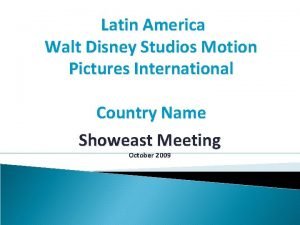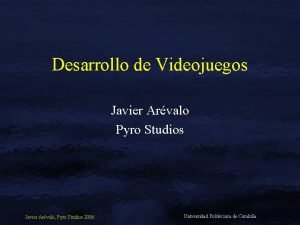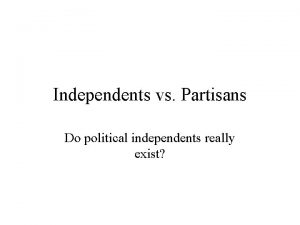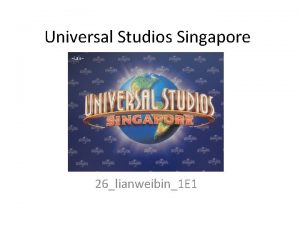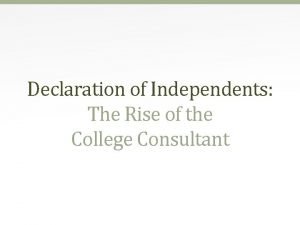THE MAJOR STUDIOS AND THE INDEPENDENTS OF THE










- Slides: 10

THE MAJOR STUDIOS AND THE “INDEPENDENTS” OF THE 1960’S.

TOHO - BACKGROUND • Founded in: Tokyo, Japan 1932. • Founded by: Ichizō Kobayashi. • Genre focus: Thriller and action.

TOHO - THE DIRECTORS • Yaswirō Ozu - The end of summer • Isharō Honda - Several of the Godzilla films and The human Vapour. • Kenji Mizoguchi - Known for his mastery of long take and Mise-en-scene. • Masaki Kobayashi - Made “Kwaidan” - A collection for 4 ghost stories. It won the “The Special Jury prize” at 1965 Cannes Film festival. It also received an academy award for Best Foreign Language Film. • Mikio Naruse - Made “Shomin-geki” (working class drama) films with female protagonists. Akira Kurosawa called Naruse's style of melodrama, "like a great river with a calm surface and a raging current in its depths"

THE GODZILLA FRANCHISE • Initial Godzilla film came out in 1954. • Several of the films have political themes, dark tones and complex internal mythology. • Others are simply action films featuring aliens or monsters. • The most recent Godzilla film came out in 2014. • Some of the Godzilla films did not have a good audience reception and received low ratings on sites such as IMDB (5. 9/10) and Rotten Tomatoes (33%/100).

DAIEI • Rivals to Toho Studios. • Was one of the major studios during the post war Golden Age of Japanese cinema. • Although, they declared bankruptcy in 1971. • They were taken over by Kadokawa and became Kadokawa Daiei studios. • This was a sub division of Kadokawa Corporation. This was a distribution company.

DAIEI CONTINUED… • Leading franchises were Gamera and Zatoichi. • Zatoichi was a book adaption. • Toho later took over those franchises and created several additional movies for the Zatoichi franchise. • 1965 - Giant Monster Gamera trailer - https: //www. youtube. com/watch? v=nz 6 r. Oe. Fyk_c • 1967 - Zatoichi’s Cane Sword - 2 mins - https: //www. youtube. com/watch? v=deh. RRUYfx. QA

SHOCHIKU • A Japanese movie studio and production company. • Also distribute and produce anime films. • Founded in 1895 by brothers Takejiro Otani and Matsujiro Shirai as a production company. • They began making actual films in 1920. • They were the first studio to abandon female impersonators and model itself and its films to Hollywood standards. • A few of their films from the 60’s: Cruel story of youth (1960) and Assassination (Distribution) (1964) • Cruel story of youth trailer - https: //www. youtube. com/watch? v=ZMyn. Wm. GTj 3 Q

NIKKATSU • The name means “Japan motion pictures” • Founded in 1912 • Spent the 60’s focusing on making urban youth dramas, comedy, action and gangster films. • During the 50’s and 60’s they were renowned for their big budget action movies aimed at teenagers. • One of the biggest films they produced was Tokyo Drifter (1966) https: //www. youtube. com/watch? v=OGg_k 8 Cai 6 Q

“THE INDEPENDENTS” • These included directors and producers such as Takashi Miike, Takeshi Kitano and Akira Kurosawa produced works for “Shochiku”. • The new wave cinema was introduced in the 1960’s. • The industry decline in 1963, due to the introduction of television caused the industry to turn to their younger directors. • These new wave films were targeted at the youth.

“THE INDEPENDENTS” • Akira Kurosawa is stated to be responsible for bringing Japanese cinema to a Western audience. He was well known for his break through picture “Rashamon” in the 1950’s, yet grew in popularity with his Samurai films “Yojimbo” and “Seven Samurai”. • These Samurai films inspired Western audiences. The jidaigeki film, “Yojimbo”, was later remastered into “A Fistful of Dollars”. • https: //www. youtube. com/watch? v=jbfng. JJh 6 Ao


